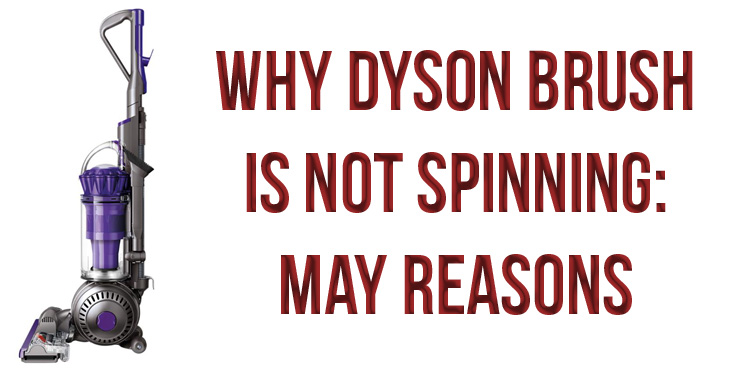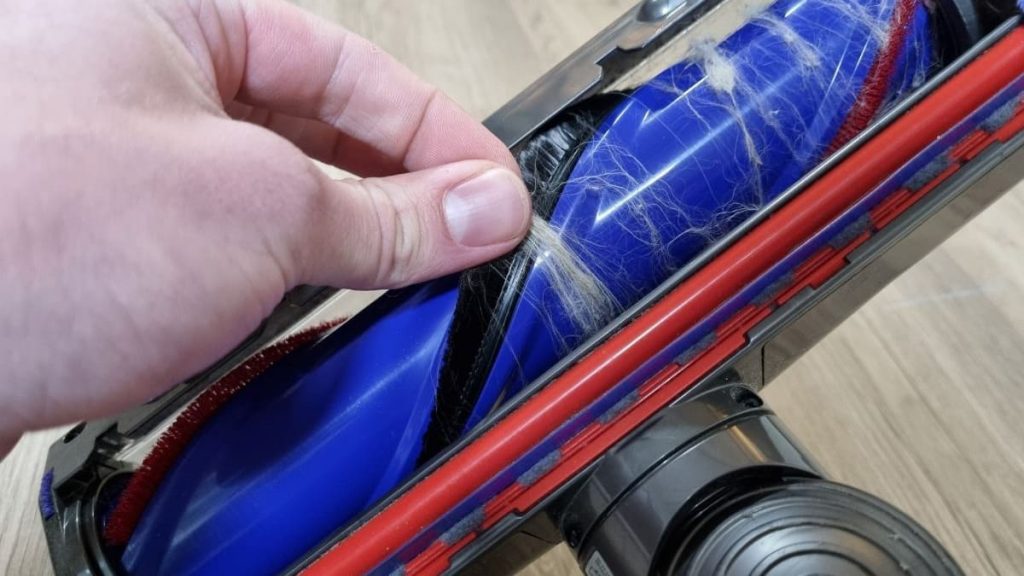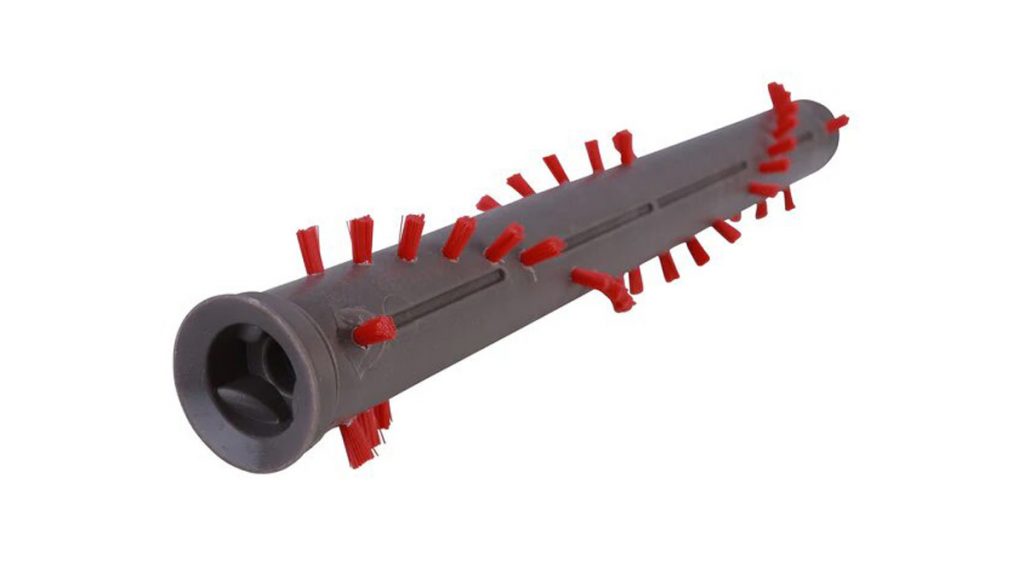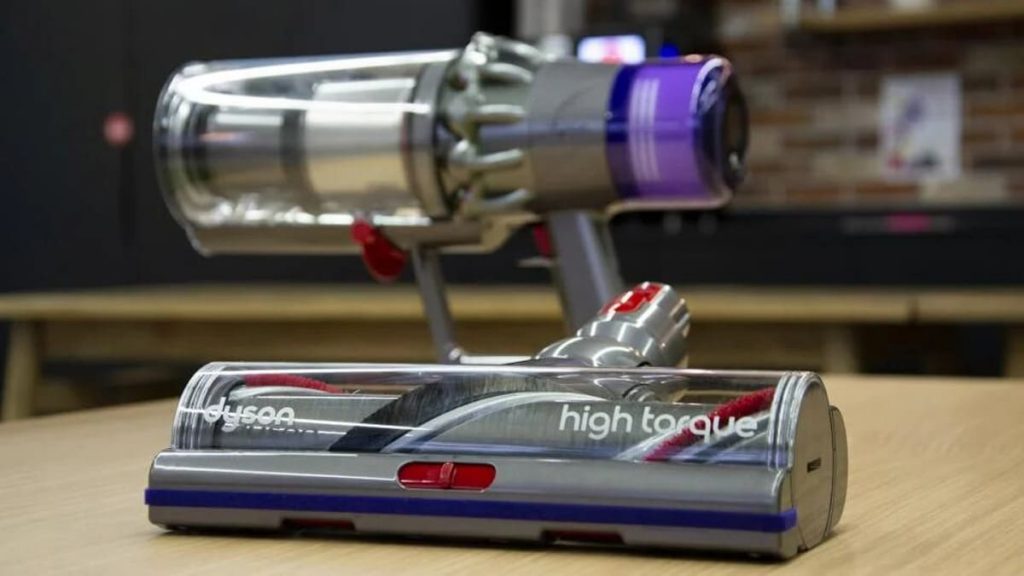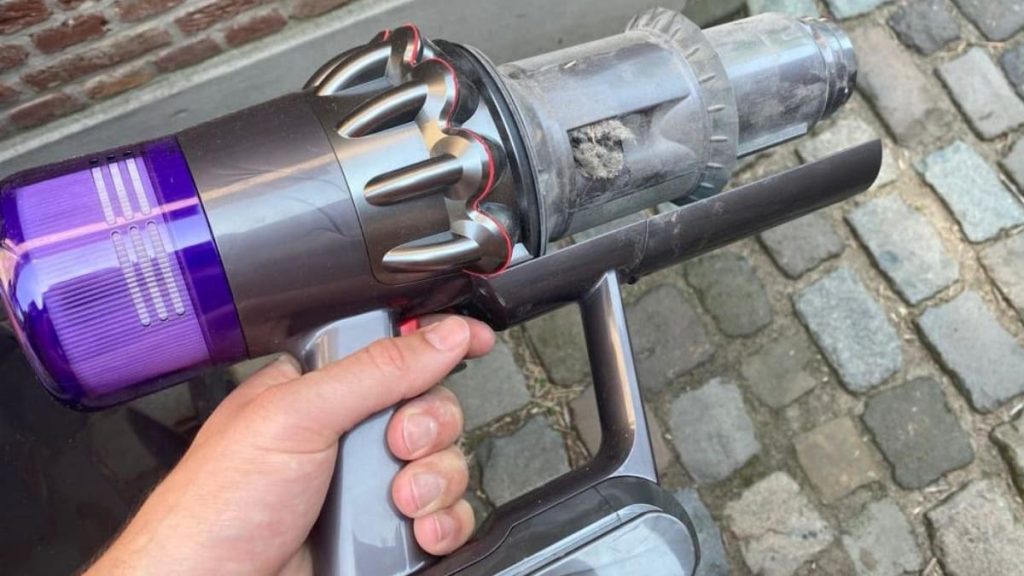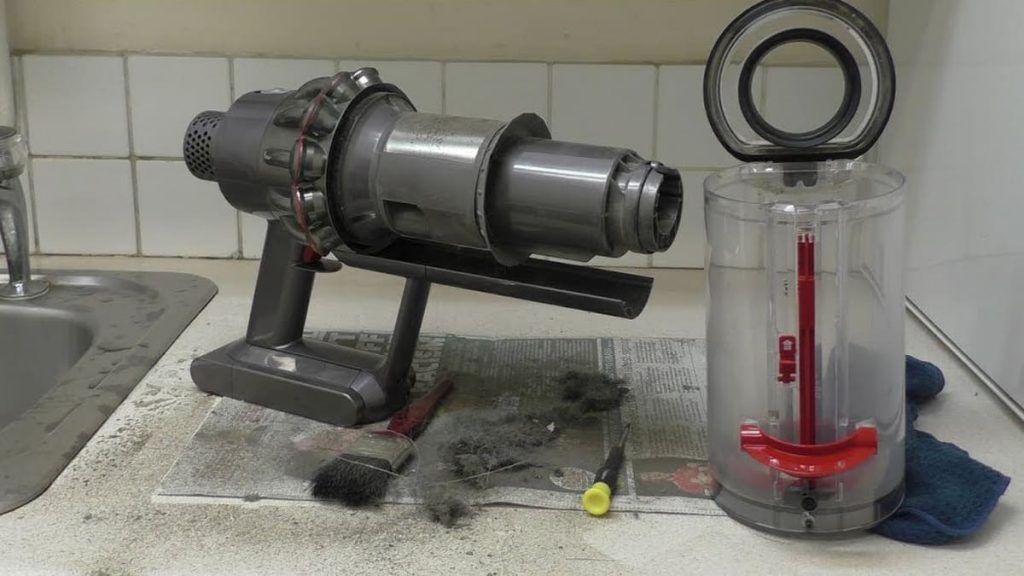Dyson vacuum cleaners, as practice shows, work very efficiently. The fact is that they perfectly combine a high rate of suction power and a good brush design that can remove dirt not only from carpets, but also from “bare” floors. However, sometimes there may be difficulties with rotation, which occurs intermittently or does not exist at all.
If for some reason the brush bar does not rotate at all, it may be due to a dirty bar or tangling it in long hair, wool. For the same reasons, jamming of the transmission rod, which ensures the rotation of the brush, can occur. On the other hand, the cleaning head rotating the brush may not be powered at all due to dirty connectors throughout the vacuum cleaner.
This article will discuss the most common reasons why the system refuses to work. Next will be suggested troubleshooting options for a brush that does not rotate at all or rotates with varying degrees of success.
Dirty brush and cleaning head
The brush of the classic model of such a vacuum cleaner includes a rod containing bristles, which rotates at high speed due to the cleaning head. This is what helps to shake up dust and dirt and collect it. The brush nozzle together with the cleaning nozzle are elements that are assembled into a single design. It, in turn, is attached to the nozzle, as well as to the rest of the vacuum cleaner.
The Dyson brush picks up dirt residue without any problems. In addition, during the operation of the device, she has to come into contact with longer objects in the form of human hair and pet hair. The vacuum cleaner cannot easily and quickly suck them up, as a result, the hair gets tangled in the bristles of the moving elements. And each time this shred becomes more and more, if you start the situation and do nothing. All this can interfere with the correct rotation of the brush.
To correct this situation, a thorough cleaning of the brush is required:
- first you need to open the lock directly on the head of the vacuum cleaner that holds the brush in place;
- further you can put forward the brush itself to provide ease and convenience in the course of action;
- you can even pull out the brush all the way to make the cleansing process manageable;
- if the hairball is not very thick, it will not be difficult to remove it manually;
- if it is very tangled, it is difficult to deal with it, so you will have to use scissors, but you must act extremely slowly and carefully to avoid damaging the bristles;
- The user will probably want to remove absolutely all attachments on the cleaning head and remove all debris with dust.
If it suddenly turns out that the brush is faulty, you can always purchase the original model from Dyson, its average cost is a little more than $ 30.
Contaminated electrical connectors
The brand’s brush bar cleaning head is an electric item that is powered by a battery. This mechanism is located in the handle, which the user holds during operation. It is the battery that provides power to the cleaning head through several electrical connectors located throughout the device. You can find them everywhere, at least in the area where the individual parts of the unit are connected to each other.
Vacuum cleaners of this brand are able to collect dust almost everywhere. Over time, it accumulates around the joints, as well as at the locations of electrical connectors. Those elements that have a coating in the form of dust are not able to transmit power directly to the cleaning head to rotate the rod. If this is true, the user will find that the brush rotates intermittently or refuses to rotate at all.
To correct the situation, it is necessary to disassemble all the elements of the vacuum cleaner. First, the head itself is removed, in which the brush is located, then the wand, the dust bath are removed, the motor is separated from the handle with the battery. After that, it remains to take a brush or dry cloth to wipe all electrical connectors, removing dust and other obstacles. At the end of the process, you need to assemble the vacuum cleaner. It is important that the cleaning head does not encounter obstacles during the power generation process, and that the brush can rotate fully.
Blocking the entrance of a stick or trash can
It is important that dust and dirt particles move strictly in the direction from the brush to the container from the vacuum. While the brush is “working” with dirt on the ground, the motor performs suction to move it to a special container. To get into it, the dirt passes through the tube, and then through the inlet of the garbage collector. Only after that she settles down.
No matter where the dirt ends up, there is always the risk of it accumulating. In such a situation, it will occur in the tube or in the inlet. As the accumulation continues to build up, the vacuum will gradually lose suction power. If this process does not take place, the rotation of the brush will slow down, and the dirt will accumulate even faster.
To correct this situation, it is necessary to disconnect the stick from the head and from the inlet type hole. Any dirt can be cleaned in this way. The first step is to act in the area of both ends of the tube connected to the cleaning head and inlet. For thoroughness of actions, it is recommended to use a flashlight and shine it into a stick to determine blockages inside. After that, it remains to clean everything around the inlet of the garbage collector and make sure that air flows freely.
Transmission rod problems
The rotation of the brush is due to the motor. He, in turn, is built into the cleaning head and is responsible for the transfer of energy through a special rod. It is on it that the brush is attached. The user probably already knows that dust and dirt penetrates even the narrowest places of the Dyson system. A similar situation is observed with the transmission rod, which is responsible for the operation of the brush. Hair and fur all get stuck around the rod too, so its ability to rotate the brush eventually comes to naught.
To correct the situation, first remove the brush, and then the transmission rod with a screwdriver. After unscrewing the screw and removing the transmission plate, you can begin to remove all dust and dirt, as well as wool and hair.
Troubleshooting guide
Why does the brush refuse to rotate after cleaning?
In this case, the user must make sure of the following points:
- the transmission rod is not stuck; if this happens, it is necessary to remove it with a screwdriver and remove the remaining dirt;
- electrical connectors are in a clean state, and the cleaning head receives full power, they are everywhere, as already noted, at the junctions of individual elements with each other;
- there are no blockages in the opening of the tube or the hopper.
Why does one side of the brush refuse to turn?
Some of them have a left and right side, and one of them may suddenly stop rotating. It’s probably just stuck in fur or hair and needs to be cleaned. If the rod still refuses to work, the plastic axle on which the brush sits may have broken, and it needs to be replaced.
Why is the new brush not spinning?
If it does not work, even if it was recently purchased and used for the first time, you need to check that all electrical connectors are clean and continue to provide the cleaning head with proper power. It is also important to make sure that the transmission rod is not stuck. To do this, the brush element is removed and the transmission rod is rotated. If it is not possible to rotate freely, it must be removed with a special screw and cleaned from below.
Why did the brush stop spinning on the carpet?
Perhaps the point is precisely in the features of certain carpets, most often in practice this problem occurs when using products with a high pile. The fact is that the threads get stuck in the brush mechanism itself. All this can be prevented by switching to economy mode during carpet cleaning with a vacuum cleaner.
